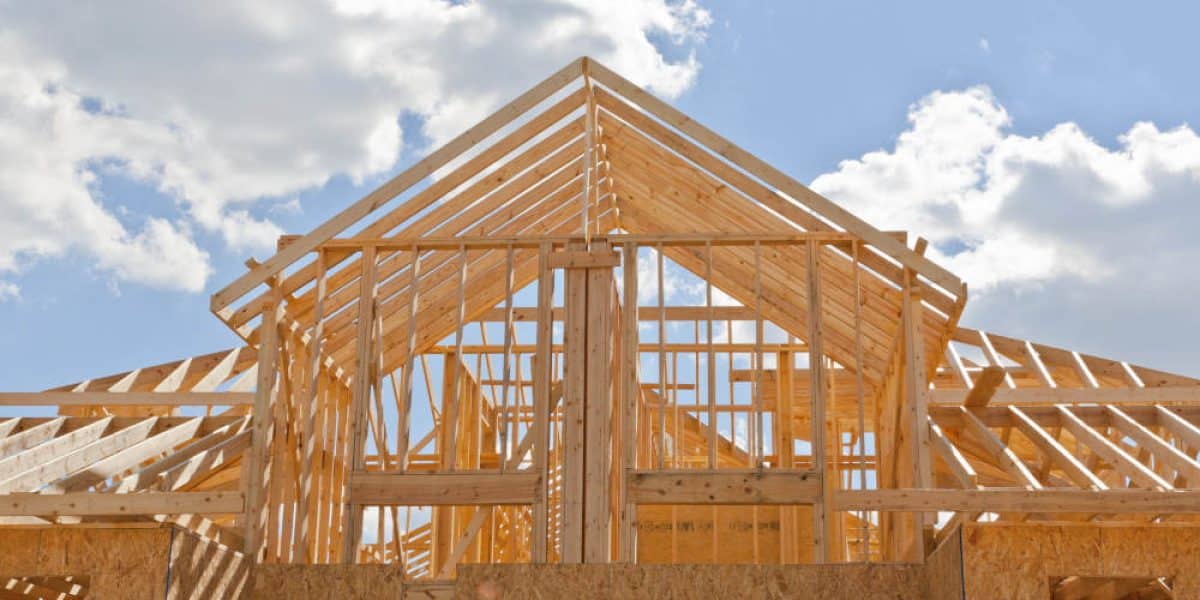Lifting or relocating your wood-framed Type V building requires emotional and financial investment and strategic planning for your structural contractor. But when you partner with the right firm and know what to expect, a structural relocation can be simple and stress-free.
This article outlines our top five tips for moving or lifting your Type V buildings. Read on to learn how to prepare for your big project.
What is a Wood-Framed Type V Building?
The International Building Code categorizes structures into one of five groups based on their materials and resistance to fire, with Type I being the most fire resistance and Type V being the least.
A Type V structure is the only category of construction that allows for the use of combustible materials on the exterior and interior of the building. Wood-framed Type V construction is most commonly used in single-family homes. Many homeowners who want to move or lift their house own a wood-framed Type V structure.
At DeVooght House Lifters, we’ve lifted and relocated countless wood-framed Type V buildings over the years.
Below, we list our top five tips for your Type V structural relocation project.
Inspect for Rot
The mark of a wood-framed Type V structure is the wooden elements on the interior and exterior of the building. As discussed above, this construction type is especially susceptible to fire damage. But wood rot can also threaten your building’s structural integrity.
We advise you to hire an inspector to check for signs of rot on your home before your lift or move. By inspecting before your project, you can plan to make necessary repairs at the appropriate stages of your project. For example, your contractor might need to address rot or weakness while your building is lifted and before it’s secured on a new foundation.
The ideal time to inspect for rot is during your lift or move. You’ve got contractors at your disposal. Use them to make repairs or mitigations for deterioration.
Sort Out Repairs
Your building, whatever its use, likely needs some repairs after the lift or move. It doesn’t take long for a home to feel the strain of someone living inside. And even under the supervision of the most seasoned and professional structural relocation firms, there’s a chance your building might incur damage resulting from the lift. So post-lift is the ideal time to tackle any lingering repairs that your home or building needs.
In most cases, a simple hairline crack in a wall or ceiling is the only evidence that a wood-frame structure has been moved to a new height or property. These cosmetic damages are easy fixes, and your general contractor can take care of them.
Plan for Hidden Costs
When your structural relocation contractor provides you with an estimate, you can plan to budget about that much for your project. You don’t need to worry about hidden costs associated with your contractor.
However, hidden fees do crop up from time to time from other external sources. For example, you might incur costs for disconnecting and reconnecting your plumbing, cable, internet, water, or electricity.
Ask your contractors about potential hidden or surprise costs their clients encounter. This will help you budget appropriately for your project.
Safeguard Valuables
Whether you have your wood-framed structure lifted a few inches or moved across the state, you can leave your belongings inside. Larger pieces of furniture will likely not move. Smaller, more fragile items should be packed away to prevent accidental damage.
Though theft is uncommon, you should secure all valuables before your project begins. During the lift or move, your home will be unattended. Plan to safeguard your valuables before your wood-frame home lift so you have peace of mind that your most precious possessions are secure.
Plan for Displacement
Your Type V structural lift will take more than a few days. Depending on the height of the lift or the distance of your relocation, you could be out of your home for weeks. Therefore, you must plan alternative living arrangements during your lift or move. Your lifting contractor should give you an estimate of the total length of the project.
If you have additional construction or renovation work done after your lift or move, you will need to know when your home will be livable again. For example, if you’re having your walls painted, you might be able to move in while that project is being completed. You should plan a more extended displacement period for other more significant projects.
Conclusion
Lifting or moving your wood-frame Type V building requires expertise, planning, and the proper equipment to execute the project safely and successfully. DeVooght House Lifters has provided structural relocation services for over five decades. As a result, we have the know-how and integrity you want when your building is on the line.
Give our team a call if you’re ready to move your wood-frame building –– or any other structure. Our team is happy to begin the conversation with you today!

